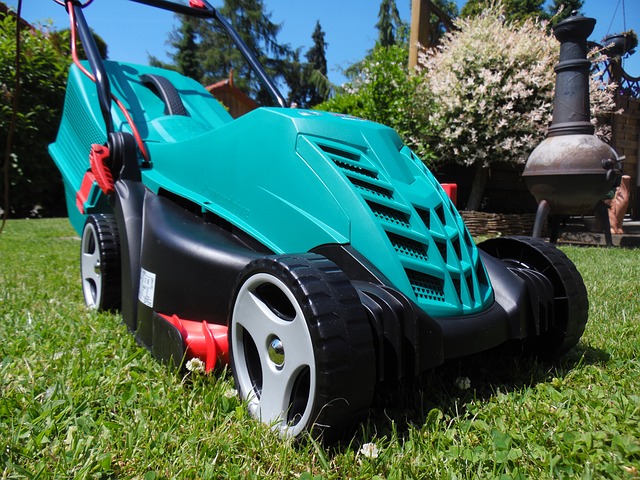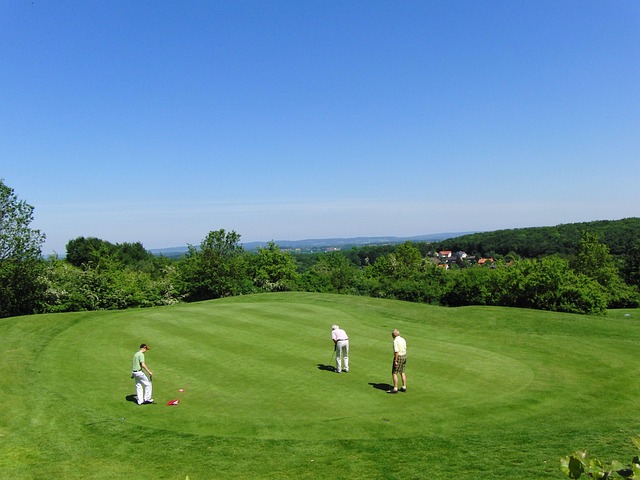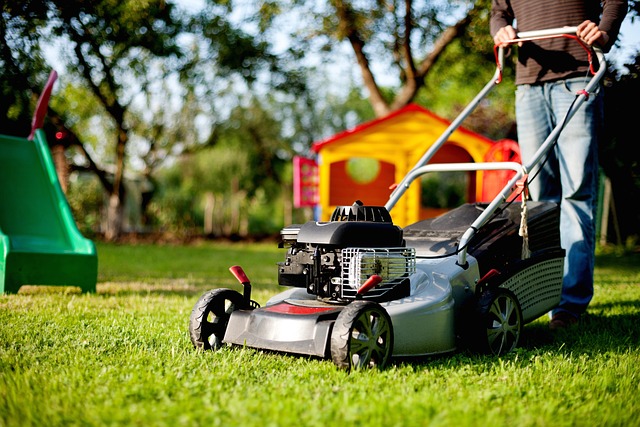Effective Lawn Care and Landscaping hinges on understanding fertilization, timing, and integrated pest management (IPM). Different grass species require specific NPK blends—warm-season grasses benefit from balanced fertilizers, while cool-season varieties thrive with high-nitrogen formulas during active growth periods. Timing is crucial; spring and fall are ideal for most lawns due to favorable temperatures and rainfall, though local climates may vary these timelines. Regular soil testing ensures optimal conditions, promoting robust grass growth and weed prevention. Integrating pre-emergent and post-emergent strategies with organic matter, proper mowing, watering, and fertilization creates a healthy, vibrant lawn without harmful chemicals, enhancing outdoor spaces' aesthetics.
“Elevate your lawn care game with our comprehensive guide to fertilization and weed control. In the realm of lawn care and landscaping, maintaining a lush, healthy green space is an art. We delve into the science behind fertilization, exploring nutrient choices and optimal timing for robust grass growth. Furthermore, we unravel effective weed management strategies, from pre-emergent to post-emergent techniques. By embracing integrated pest management, you can achieve a balanced ecosystem where fertilizers nourish while weeds are neutralized, ensuring your lawn’s longevity.”
- Understanding Lawn Fertilization: Choosing the Right Nutrients and Timing
- Effective Weed Control Strategies: From Pre-Emergent to Post-Emergent Methods
- Integrated Pest Management: Balancing Fertilization and Weed Control for a Healthy Lawn
Understanding Lawn Fertilization: Choosing the Right Nutrients and Timing

Understanding Lawn Fertilization is a crucial aspect of effective lawn care and landscaping. The right nutrients at the optimal time can transform a patchy, unkempt lawn into a lush, vibrant green oasis. When choosing fertilizers, consider the specific needs of your grass species, as different types require unique blends of nitrogen, phosphorus, and potassium (NPK). For example, warm-season grasses like Bermuda or Zoysia thrive with balanced fertilizers, while cool-season grasses such as Kentucky Bluegrass benefit from higher nitrogen formulas during their active growth periods.
Timing is equally vital. Fertilization should occur when the grass is actively growing to maximize nutrient absorption. Spring and fall are generally considered the best times for most lawns, as these seasons offer cooler temperatures and adequate rainfall, promoting healthy grass growth. However, local climate variations may dictate slightly different timelines. Regularly testing soil health and adjusting fertilization schedules according to seasonal changes ensures your lawn receives the care it needs, fostering a robust and weed-free landscape.
Effective Weed Control Strategies: From Pre-Emergent to Post-Emergent Methods

Maintaining a lush, weed-free lawn is every homeowner’s desire. Effective weed control starts with understanding the different strategies available. Pre-emergent methods are proactive, targeting weeds before they emerge from the soil. These include applying selective herbicides that inhibit seed germination, creating a dense grass cover that competes for resources. Post-emergent strategies, on the other hand, focus on killing existing weeds. This involves using non-selective herbicides that eliminate visible foliage, requiring careful application to avoid damaging desirable plants.
Combining these methods with proper lawn care and landscaping practices can significantly reduce weed populations. Regular mowing, proper watering, and fertilizing create an environment unfavorable for weed growth. Incorporating organic matter into the soil improves its structure and fertility, further hindering weed establishment. By integrating these strategies, homeowners can achieve and maintain a healthy, vibrant lawn, enhancing the overall aesthetics of their outdoor spaces.
Integrated Pest Management: Balancing Fertilization and Weed Control for a Healthy Lawn

In the realm of lawn care and landscaping, Integrated Pest Management (IPM) is a holistic approach that balances fertilization and weed control to create a healthy, vibrant lawn. Unlike traditional methods that rely heavily on chemical treatments, IPM focuses on preventing and managing pests in an environmentally friendly way. By understanding the delicate balance between nourishing the grass with essential nutrients and controlling weeds, homeowners can achieve lush, green lawns free from harmful chemicals.
This strategy involves regular monitoring of the lawn to identify any pest or weed issues early on. Once detected, targeted treatments are applied, ensuring minimal impact on non-target organisms and the environment. Proper fertilization schedules, tailored to the specific grass types, play a crucial role in strengthening the lawn against weeds and pests. Meanwhile, effective weed control methods, such as manual removal or selective herbicides, complement these practices by eliminating competition for nutrients, further promoting a healthy landscape.
In the realm of lawn care and landscaping, proper fertilization and weed control are integral components for achieving a lush, healthy yard. By understanding the science behind fertilization and adopting effective strategies for weed management, homeowners can transform their outdoor spaces into vibrant oases. Balancing these practices through integrated pest management ensures a harmonious environment that promotes grass growth while mitigating unwanted weeds. With the right approach, maintaining a pristine lawn becomes an accessible and rewarding endeavor for all.






